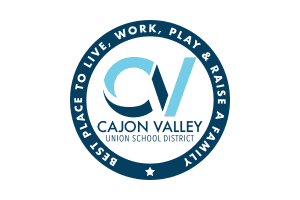
Transforming employee engagement through proactive leadership
The Opportunity
Cajon Valley Union School District, serving approximately 17,000 students across 29 schools with nearly 2,000 employees, faced a critical workforce challenge.
Despite conducting annual pulse surveys across all stakeholder groups—students, families, and staff—the district’s approach to employee engagement was purely reactive, providing only a “satellite view” of employee sentiment without actionable insights.
The data revealed that the district experienced its highest turnover rates among paraeducators and extended day program leads. These frontline employees were leaving for various reasons, including limited growth opportunities, personal circumstances, and retirement, creating instability in programs that directly impact student success.
The team realized that their existing engagement strategy fell short and was not effectively addressing employee needs. The annual Gallup survey provided consistent data collection, but couldn’t be disaggregated by individual or department, making it impossible to identify specific pain points or track targeted improvements. Additionally, the district recognized they were operating reactively—responding to problems after they emerged rather than preventing them through proactive relationship building.
This situation presented both a challenge and an opportunity: How could the district shift from reactive problem-solving to proactive employee engagement that would strengthen retention and improve student support?
The Approach
Through its participation in Talent Rewire’s Employee Action Lab, Cajon Valley developed a comprehensive Personnel Hub framework centered on six interconnected elements:
- Recruiting a diverse workforce
- Hiring and onboarding
- Training and support
- Employee engagement, recognition
- Retention and growth
The district’s aspiration was clear: strengthen organizational culture so frontline teammates feel heard, understood, supported, and encouraged, while providing training and materials necessary for optimal performance. They aimed to establish policies and practices that create pathways for career growth and goal achievement.
Their innovative solution centered on enhancing employee engagement through regular, personalized one-on-one conversations. Rather than relying solely on annual surveys, they implemented a systematic approach to document interactions and maintain consistent follow-up, fostering a work environment aligned with their mission, vision, and promises.
The pilot program targeted paraeducators and extended day program leads, the two employee groups with the highest turnover rates. Leadership teams and administrators across grade levels engaged with extended day program supervisors, leads, assistants, and aides. Each pilot participant conducted conversations with 3-5 employees, strategically including newer employees, seasoned staff, and individuals with whom they had limited previous connection.
Systems change in action
The team’s approach focused on intentional structural, relational, and mental model change.
- Structural changes included moving from anxiety-inducing surveys to trust-building conversations, collaborating with unions as partners, and implementing a manageable three-times-per-year engagement cycle using already existing resources.
- Relational improvements emphasized recognition—the district has consistently increased the number of employees it publicly recognizes, demonstrating their commitment to acknowledging contributions.
- Mental model shifts focused on human-centered leadership that prioritizes growth and proactive relationship building over reactive problem-solving.
Next Steps
The pilot’s initial results revealed a workforce deeply passionate about their work, the district and most importantly, the students they serve. However, the data also identified clear opportunity for the district to respond to employee needs.
The district developed a structured timeline for scaling their approach:
- The personnel team conducted comprehensive site and department reviews, analyzing engagement data to identify patterns and opportunities for targeted improvements.
- The original pilot group will periodically reconvene to share lessons learned, refine their conversation techniques, and prepare for the second engagement cycle.
- Pilot participants will conduct their second round of employee conversations, measuring progress on issues identified in the initial cycle and assessing the impact of interventions implemented since the first data collection.
- The final pilot engagement will evaluate the cumulative impact of sustained, personalized attention and determine readiness for district-wide implementation.
- Based on pilot results, the district plans to roll out the engagement framework to all administrators and supervisors, creating a systematic approach to proactive employee relationship building across the organization.
This shift from reactive problem-solving to proactive culture will enable the Cajon Valley Union School District to retain its most valuable asset—dedicated employees who directly impact student success. By focusing on the employees with the highest turnover rates and creating sustainable systems for ongoing engagement, the district is building a scalable foundation for long-term workforce stability and the ability to support and impact students.
![]() This innovation story was made possible through funding from The James Irvine Foundation
This innovation story was made possible through funding from The James Irvine Foundation

